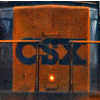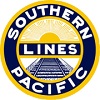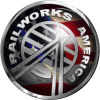Track rule setup
First unread post • 15 posts
• Page 1 of 1
 Track rule setup
Track rule setup
How do you set a track rule so in the pull down tab, you dont have to change the speed and unevenness everytime you place the track.
CSX K-921 Clear Danials Road, clear Admin Building, CSX K-921 out
www.djrailworks.blogspot.com
-

CSXK921 - Posts: 207
- Joined: Sun Jun 30, 2013 5:56 pm
- Location: Bucyrus, Ohio
Re: Track rule setup
I have been able to only set the main line speeds to come up all the time. So I just lay my track and then go back over it all with the selection tool and change speeds to what I want them. No matter what I put in the track rule, it only sets the mainline speeds for everything. If you find out something different please let us know.
Bob Artim - Generation X²
I don't have a PHD, I have a DD214... Freedom carries sacrifice
I'm crawling in the dark looking for the answer
I don't have a PHD, I have a DD214... Freedom carries sacrifice
I'm crawling in the dark looking for the answer
-

artimrj - Posts: 4721
- Joined: Sun Jan 31, 2010 3:07 pm
- Location: Beaver, Pennsylvania
Re: Track rule setup
ok thx for the fast response. I am kinda new to route building to the extent where I am changing the track rule that you can change via the pull down tab on the verrry bottom tab on the lest slide out.  I have seen where the NERW has some preset track rules. and I want to figure that out. im sorry if I sound confusing. Im new to route building and I might need a little shove in the right direction. thx for the response again.
I have seen where the NERW has some preset track rules. and I want to figure that out. im sorry if I sound confusing. Im new to route building and I might need a little shove in the right direction. thx for the response again. 
 I have seen where the NERW has some preset track rules. and I want to figure that out. im sorry if I sound confusing. Im new to route building and I might need a little shove in the right direction. thx for the response again.
I have seen where the NERW has some preset track rules. and I want to figure that out. im sorry if I sound confusing. Im new to route building and I might need a little shove in the right direction. thx for the response again. 
CSX K-921 Clear Danials Road, clear Admin Building, CSX K-921 out
www.djrailworks.blogspot.com
-

CSXK921 - Posts: 207
- Joined: Sun Jun 30, 2013 5:56 pm
- Location: Bucyrus, Ohio
Re: Track rule setup
Be careful you do not want to have more than 1 track rule in use. It could stop tracks from connecting together. You will be sad if that happens.
Bob Artim - Generation X²
I don't have a PHD, I have a DD214... Freedom carries sacrifice
I'm crawling in the dark looking for the answer
I don't have a PHD, I have a DD214... Freedom carries sacrifice
I'm crawling in the dark looking for the answer
-

artimrj - Posts: 4721
- Joined: Sun Jan 31, 2010 3:07 pm
- Location: Beaver, Pennsylvania
Re: Track rule setup
It is generally no problem if you have more than 1 trackrule. That was just an old untrue statement of RSC, which they never revoced.
The reason for the connecting problem artimrj is talking is: You may have different minimal radii in the trackrules and when you have laid a piece with 160m radius and want to extend it with a trackrule allowing only tracks beginning from 200 m radius you will fail.
It is strongly recommended to use separate trackrules for the main speeds in your route if you want to use superelevation.
In reality superelevation is dependent on the radius and the speed and the usage of the route (freight or passeneger (=highspeed) or mixed.
This can be achieved in railworks by variation of the value of <MaxSpeedTolerance d:type="sUInt32">110</MaxSpeedTolerance> (this is a good value for 100 km/h = 62 mph). As only one value is valid in a trackrule you have to use several trackrules.
In my route I use 16 trackrules for 8 different speeds (for left and right switches). No problem at all and you fly through the curves as you will always have the maximum cant in curves with minimal radius! No commercial route uses this feature until now. You may experience this feeling in the recently published freeware route "Projekt Freiberg(Sachs)" http://rail-sim.de/railsimnew/index.php/downloadscat/viewdownload/41-strecken/1896-projekt-freiberg-sachs which is made by one of our members on rail-sim.de (rolling stock is very uncommon for you in america, so just create a freeroam to use).
General rules for using several trackrules and superelevation:
- Use only one trackrule withing one curve, otherwise you will get a bump.
- superelevation only in curves with an easement curve (clothoid) on both ends and between different radii
- separate tracks with different pieces of trackrules by cutting and joining (there must be a red triangle), otherwise the loco may have problems with reading the right trackspeed.
Kris
The reason for the connecting problem artimrj is talking is: You may have different minimal radii in the trackrules and when you have laid a piece with 160m radius and want to extend it with a trackrule allowing only tracks beginning from 200 m radius you will fail.
It is strongly recommended to use separate trackrules for the main speeds in your route if you want to use superelevation.
In reality superelevation is dependent on the radius and the speed and the usage of the route (freight or passeneger (=highspeed) or mixed.
This can be achieved in railworks by variation of the value of <MaxSpeedTolerance d:type="sUInt32">110</MaxSpeedTolerance> (this is a good value for 100 km/h = 62 mph). As only one value is valid in a trackrule you have to use several trackrules.
In my route I use 16 trackrules for 8 different speeds (for left and right switches). No problem at all and you fly through the curves as you will always have the maximum cant in curves with minimal radius! No commercial route uses this feature until now. You may experience this feeling in the recently published freeware route "Projekt Freiberg(Sachs)" http://rail-sim.de/railsimnew/index.php/downloadscat/viewdownload/41-strecken/1896-projekt-freiberg-sachs which is made by one of our members on rail-sim.de (rolling stock is very uncommon for you in america, so just create a freeroam to use).
General rules for using several trackrules and superelevation:
- Use only one trackrule withing one curve, otherwise you will get a bump.
- superelevation only in curves with an easement curve (clothoid) on both ends and between different radii
- separate tracks with different pieces of trackrules by cutting and joining (there must be a red triangle), otherwise the loco may have problems with reading the right trackspeed.
Kris
-

kris120 - Posts: 471
- Joined: Mon Jul 22, 2013 3:19 pm
- Location: Augsburg, Bavaria, Germany
Re: Track rule setup
This last post is complete and utter guff. There must be something lost in translation. Maybe trackrules and track types??? 


16 trackrules for 8 speeds?? Do me a favour!!!
No, they don't. Because it's insanity!!!
I could go on, but I fear I may have a stroke.

There may be a valid discussion point in here somewhere (not entirely sure where), but I need a very long lie down in a very dark room first. Ideally until about August.



16 trackrules for 8 speeds?? Do me a favour!!!

No commercial route uses this feature until now
No, they don't. Because it's insanity!!!
I could go on, but I fear I may have a stroke.


There may be a valid discussion point in here somewhere (not entirely sure where), but I need a very long lie down in a very dark room first. Ideally until about August.

Last edited by hertsbob on Fri Mar 14, 2014 4:19 am, edited 1 time in total.
"Life is like a journey, taken on a train
With a pair of travelers at each windowpane.
I may sit beside you all the journey through,
Or I may sit elsewhere, never knowing you.
But if fate should mark me to sit by your side,
Let's be pleasant travellers; it's so short a ride."
With a pair of travelers at each windowpane.
I may sit beside you all the journey through,
Or I may sit elsewhere, never knowing you.
But if fate should mark me to sit by your side,
Let's be pleasant travellers; it's so short a ride."
-

hertsbob - Posts: 388
- Joined: Wed Aug 17, 2011 5:15 am
- Location: The Hollywood of SW Herts
Re: Track rule setup
Number one reason you do not mix track rules. It breaks the network ribbon.
If the network ribbon is not continuous, you cannot add signals properly, and setting speed limits is a total nightmare.
If the network ribbon is not continuous, you cannot add signals properly, and setting speed limits is a total nightmare.
"Just post some random unrelated text. We have members here who can help you with that." ~ Chacal
"When all else fails, read the instructions... if that doesn't work either, try following them." ~ Old Prof
The Grade Crossing - Atlanta North Project - Virtual Rail Creations
-

PapaXpress - Posts: 5147
- Joined: Sat Oct 23, 2010 10:30 pm
- Location: that "other" timezone
Re: Track rule setup
I've had a chance to have a look at the track rules used this morning, although I can 'only' find 11. 
First off, six of them are essentially identical. Four more are effectively two track rules doubled-up for no apparent reason.
There is a valid argument that one might wish to have different track rules to accommodate differing levels of SE in one route, but that is the only reason you would ever want to even think about doing this.
Having all track types set to the same MaxSpeedTolerance and MinRadius it totally illogical.
No Line Unevenness settings in any of the track rules.
I can only conclude that the chappie who has done this has fundamentally misunderstood the way track rules work and that my initial assessment of the situation was correct. Perhaps he's not realised that you can change track properties in the RH Flyout?

First off, six of them are essentially identical. Four more are effectively two track rules doubled-up for no apparent reason.
There is a valid argument that one might wish to have different track rules to accommodate differing levels of SE in one route, but that is the only reason you would ever want to even think about doing this.
Having all track types set to the same MaxSpeedTolerance and MinRadius it totally illogical.
No Line Unevenness settings in any of the track rules.

I can only conclude that the chappie who has done this has fundamentally misunderstood the way track rules work and that my initial assessment of the situation was correct. Perhaps he's not realised that you can change track properties in the RH Flyout?
You do not have the required permissions to view the files attached to this post.
"Life is like a journey, taken on a train
With a pair of travelers at each windowpane.
I may sit beside you all the journey through,
Or I may sit elsewhere, never knowing you.
But if fate should mark me to sit by your side,
Let's be pleasant travellers; it's so short a ride."
With a pair of travelers at each windowpane.
I may sit beside you all the journey through,
Or I may sit elsewhere, never knowing you.
But if fate should mark me to sit by your side,
Let's be pleasant travellers; it's so short a ride."
-

hertsbob - Posts: 388
- Joined: Wed Aug 17, 2011 5:15 am
- Location: The Hollywood of SW Herts
Re: Track rule setup
- doubled rules: These "double" rules are necessary as the builder uses different animated switchpoint lights for left and right and and crossings. No other way possible (You cannot change a switchpoint light via track properties).
- The important factor for superelevation is MaxSpeedTolerance. This is correctly set for 60, 80 and 100 km/h. At 40 km/h it is used only for yards in Germany. There you will find nowhere any superelevation. So this is irrelevant.
- Exceptionally, you can change this MaxSpeedTolerance in a certain curve whithin about +/-10 to 20% (just do a reload of the route after changing of the trackrule). The laid track will not change its radius. But the factor CurveToAngle determines how quick the train tilts when entering the curve. This should be consistent with MaxSpeedTolerance, otherwise the feeling in RW/TS won't be very nice. So be careful with changing the MaxSpeedTolerance.
- Lineuneveness: In Europe (not UK!) the condition of the network is totally different from America or UK. I personally would use on this route a Lineuneveness of 5 to 15, not more, but that has not very much effect. But that was not the question here. Just use a suitable value for your situation.
- @hertsbob: I disbelieve that you have complete understood, what is possible with a trackrule and what not.
(Next time I stop explaining something here when I must read such stuff by you ..., I don't need...)
- @papaxpress: please read my previous post, multiple trackrules don't destroy a ribbon. Or do you see any break in the Sachsen-Route I've mentioned ? ... If the network ribbon is not continuous, you even cannot go over the break!
Kris
- The important factor for superelevation is MaxSpeedTolerance. This is correctly set for 60, 80 and 100 km/h. At 40 km/h it is used only for yards in Germany. There you will find nowhere any superelevation. So this is irrelevant.
- Exceptionally, you can change this MaxSpeedTolerance in a certain curve whithin about +/-10 to 20% (just do a reload of the route after changing of the trackrule). The laid track will not change its radius. But the factor CurveToAngle determines how quick the train tilts when entering the curve. This should be consistent with MaxSpeedTolerance, otherwise the feeling in RW/TS won't be very nice. So be careful with changing the MaxSpeedTolerance.
- Lineuneveness: In Europe (not UK!) the condition of the network is totally different from America or UK. I personally would use on this route a Lineuneveness of 5 to 15, not more, but that has not very much effect. But that was not the question here. Just use a suitable value for your situation.
- @hertsbob: I disbelieve that you have complete understood, what is possible with a trackrule and what not.
(Next time I stop explaining something here when I must read such stuff by you ..., I don't need...)
- @papaxpress: please read my previous post, multiple trackrules don't destroy a ribbon. Or do you see any break in the Sachsen-Route I've mentioned ? ... If the network ribbon is not continuous, you even cannot go over the break!
Kris
-

kris120 - Posts: 471
- Joined: Mon Jul 22, 2013 3:19 pm
- Location: Augsburg, Bavaria, Germany
Re: Track rule setup
Kris, I spent countless hours fixing bugs in my route because I had mixed rules. I still do not see a need for more than one rule. That said, I do use a customized track rule in my route.
"Just post some random unrelated text. We have members here who can help you with that." ~ Chacal
"When all else fails, read the instructions... if that doesn't work either, try following them." ~ Old Prof
The Grade Crossing - Atlanta North Project - Virtual Rail Creations
-

PapaXpress - Posts: 5147
- Joined: Sat Oct 23, 2010 10:30 pm
- Location: that "other" timezone
Re: Track rule setup
I know, working with more than 2 to 4 rules needs a lot of discipline. You have to think before you lay track which rule is necessary.
RSC/DTG should make it possible that you can change the trackrule in the editor like any other track property. But I think we can wait for that for years.
And it's a pitty that the names of the trackrules are mixed in the editor since TS2014 (names of rules in the same folder were sorted correctly before).
I'm sorry that I don't have a deeper knowledge about American practice how tracks are laid in reality. In suppose that every company has it's own specifications. In Europe the specifications differ from country to country, but all have to respect the physical laws. My experience is very well in German and Swiss routes, as my current projects are a swiss route over a pass and a highspeed German route. The practice in reality is not irrelevant for building up a route in the computer. For example the Swiss allow often a slightly higher speed in curves than the German, but in the stations they go slower. So I use a different set of rules in Switzerland and in Germany (Germany: longer easements and lower speed at a certain radius). With a lot of trackrules you don't have to change the speed any more after track laying.
Kris
p.s. In the Package DBTracks http://railworks-austria.at/index.php/d ... -db-tracks you may find trackrules, which have very long easements (should run very smooth, maybe you reduce MaxSpeedTolerance by 20% when you have problems laying curves). Just make a copy of the rules, replace KPH with MPH, convert the linespeed to MPH, adopt the name and the JunctionEntities, and you will be fine. The pseudo-3D-tracks in this package are the most beautiful and realistic ones I have seen in RW/TS. And with them you can do superelevation (a real 3D-track does not twist in RW/TS).
RSC/DTG should make it possible that you can change the trackrule in the editor like any other track property. But I think we can wait for that for years.
And it's a pitty that the names of the trackrules are mixed in the editor since TS2014 (names of rules in the same folder were sorted correctly before).
I'm sorry that I don't have a deeper knowledge about American practice how tracks are laid in reality. In suppose that every company has it's own specifications. In Europe the specifications differ from country to country, but all have to respect the physical laws. My experience is very well in German and Swiss routes, as my current projects are a swiss route over a pass and a highspeed German route. The practice in reality is not irrelevant for building up a route in the computer. For example the Swiss allow often a slightly higher speed in curves than the German, but in the stations they go slower. So I use a different set of rules in Switzerland and in Germany (Germany: longer easements and lower speed at a certain radius). With a lot of trackrules you don't have to change the speed any more after track laying.
Kris
p.s. In the Package DBTracks http://railworks-austria.at/index.php/d ... -db-tracks you may find trackrules, which have very long easements (should run very smooth, maybe you reduce MaxSpeedTolerance by 20% when you have problems laying curves). Just make a copy of the rules, replace KPH with MPH, convert the linespeed to MPH, adopt the name and the JunctionEntities, and you will be fine. The pseudo-3D-tracks in this package are the most beautiful and realistic ones I have seen in RW/TS. And with them you can do superelevation (a real 3D-track does not twist in RW/TS).
-

kris120 - Posts: 471
- Joined: Mon Jul 22, 2013 3:19 pm
- Location: Augsburg, Bavaria, Germany
Re: Track rule setup
Kris, even with what you have just said I still find it likely you can use one track rule per route, and if necessary, multiple if the ribbons never meet.
For example, I currently only use one track rule on my route for my standard gauge engines. Latter if I wanted to add BART which uses a third rail, I could use a completely different track rule for this. The reason being is that the two railroads never connect.
Anyway, do what you think is best for your route.
For example, I currently only use one track rule on my route for my standard gauge engines. Latter if I wanted to add BART which uses a third rail, I could use a completely different track rule for this. The reason being is that the two railroads never connect.
Anyway, do what you think is best for your route.
"Just post some random unrelated text. We have members here who can help you with that." ~ Chacal
"When all else fails, read the instructions... if that doesn't work either, try following them." ~ Old Prof
The Grade Crossing - Atlanta North Project - Virtual Rail Creations
-

PapaXpress - Posts: 5147
- Joined: Sat Oct 23, 2010 10:30 pm
- Location: that "other" timezone
Re: Track rule setup
CSXK921 wrote:How do you set a track rule so in the pull down tab, you dont have to change the speed and unevenness everytime you place the track.
I'm going to try and bring this back on course as I also have the same question.
I'm trying to lay out a lot of yard track that is spaced more than the current track rules allow and I have 6-7 separate yards to place on my route, the Hieg-Seig (sp?) Yard rule is about as close as I can get but it's still just slightly narrow and having to turn off the overhead wires every time I make changes is getting tedious. How does one make a custom track rule to support thier needs?
- Celidude
Re: Track rule setup
See if this helps.
http://thegradecrossing.blogspot.com/20 ... u-can.html
http://thegradecrossing.blogspot.com/20 ... u-can.html
"Just post some random unrelated text. We have members here who can help you with that." ~ Chacal
"When all else fails, read the instructions... if that doesn't work either, try following them." ~ Old Prof
The Grade Crossing - Atlanta North Project - Virtual Rail Creations
-

PapaXpress - Posts: 5147
- Joined: Sat Oct 23, 2010 10:30 pm
- Location: that "other" timezone
Re: Track rule setup
kris120 wrote:- @hertsbob: I disbelieve that you have complete understood, what is possible with a trackrule and what not.
(Next time I stop explaining something here when I must read such stuff by you ..., I don't need...)
Fair enough. There are plenty of my trackrules available that you could have a look at if you ever felt you wanted to.
It's a shame we haven't been able to have a proper conversation on the subject, but that's something I'm happy to continue should you wish.

"Life is like a journey, taken on a train
With a pair of travelers at each windowpane.
I may sit beside you all the journey through,
Or I may sit elsewhere, never knowing you.
But if fate should mark me to sit by your side,
Let's be pleasant travellers; it's so short a ride."
With a pair of travelers at each windowpane.
I may sit beside you all the journey through,
Or I may sit elsewhere, never knowing you.
But if fate should mark me to sit by your side,
Let's be pleasant travellers; it's so short a ride."
-

hertsbob - Posts: 388
- Joined: Wed Aug 17, 2011 5:15 am
- Location: The Hollywood of SW Herts
15 posts
• Page 1 of 1
Who is online
Users browsing this forum: No registered users and 4 guests
